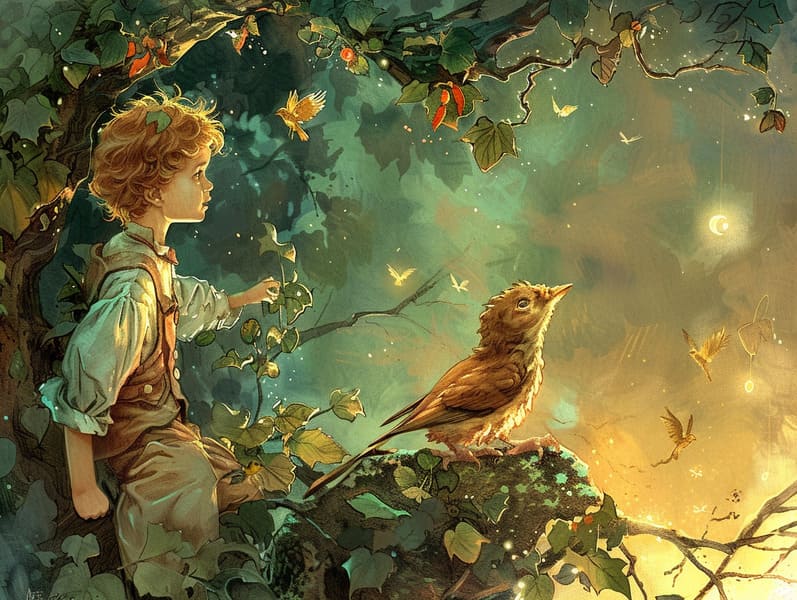The Inception of Vintage Fairy Tales and Its Invariable Loveliness.
The Inception of Vintage Fairy Tales and Its Invariable Loveliness.
Blog Article

Short fairy tales have long histories. These stories have been transmitted from one generation to the next well before they were ever transcribed. They came from a variety of cultures, including Middle Eastern traditions. They were initially transmitted among adults, often carrying themes and messages related to the societal norms and beliefs of the time.
The famous Grimm duo, Jacob and Wilhelm (the Grimm brothers), were among the first to compile and release many of these beloved tales. Their volume, "Grimm's Folk Tales," included stories like "Ashenputtel," "The Bread Crumb Trail," and "Snow White," which have since become pillars in the world of iconic fairy tales. Similarly, Hans Christian Andersen's magical fairy tales, such as "The Mermaid," and "The Duckling that Could," have won hearts worldwide, ensuring their place in the pantheon of timeless fairy tales.
Despite their historical roots, these tales remain as significant as ever, especially as children's bedtime stories. These magical stories are now available in multiple formats, including gorgeously illustrated books, delightful animations, and internet fairy tales.
Their enduring popularity can be ascribed to several delightful features:
Crucial Morals: Ancient fairy tales often present important moral lessons. Tales like "The Boy Who Cried Wolf" teach the benefit of truthfulness, while "The Hare and the Tortoise" exemplify the benefits of perseverance and meekness. These narratives offer the young clear distinctions between moral and immoral, developing their moral compass in a subtle yet significant way.
Empathy and Understanding: Classic fairy tales frequently depict individuals facing problems and hurdles, stimulating audiences to sympathize with their struggles and cheer for their triumphs. For instance, "Beauty's Beast" illustrates the virtue of looking past the exterior to see the real character of a person, strengthening kindness and understanding.
Cultural Understanding: Many classic fairy tales are interwoven with the cultural contexts from which they bloomed. Immersing in these narratives can provide delightful insights into different ways of life, developing a sense of cultural insight and discernment.
Inventiveness and Imagination: The fantasy-filled elements in fairy tales—magical beings—invigorate children’s creative thoughts. These stories take readers to fantastical realms, motivating fantasy dreams and a sense of amazement that stays a lifetime.
Ancient fairy tales are not only spellbinding but also educational. They act as entrancing tools in building various mental and emotional abilities in young ones. When ancient fairy tales are read aloud, they promote language proficiency by showing new phrases and complex sentence structures. This practice also develops auditory skills and focus, as little ones stay focused, prepared to see what happens next.
Furthermore, examining the themes and characters of timeless fairy tales can improve intellectual skills and critical thinking. Children learn to notice patterns, predict happenings, and understand cause and effect. These debates also aid the young reveal their thoughts and feelings, adding to their emotional intelligence.
In today’s electronic age, the accessibility of digital fairy tales has made these stories more obtainable than ever. Online platforms and software share wide arrays of Grimm's fairy tales that can be viewed or listened on anytime, anywhere. Fairy tales told out loud are particularly favored, sharing an fascinating method for little ones to savor these bewitching tales. Read-aloud stories and read-to-me videos move characters and settings to life, often augmented by whimsical sound effects and musical scores that enrich the narrative journey.
The timeless appeal of ancient fairy tales lies in their ability to adjust to changing times while maintaining their key morals. Contemporary revisions of these tales often feature more multicultural protagonists and modern settings, making them meaningful to today’s audience. However, the core values of spirit, compassion, and equity remain unchanged, continuing to reach readers of all ages.
Old fairy tales also offer a sense of ease and closeness. They offer a well-arranged narrative with a plain beginning, middle, and end, often ending with the culmination of conflicts and the triumph of right over wrong. This regularity can be calming for little ones, distributing a sense of unwaveringness in an unstable world.
Classic fairy tales continue to bewitch and edify new generations, maintaining their captivation and applicability in modern society. As nighttime stories for kids, they provide a perfect blend of captivation and insight, furthering moral values, empathy, and creativity. The existence of internet fairy tales and the prevalence of fairy tales told out loud guarantee that these timeless tales remain reachable to new generations.
By preserving and disseminating these stories, we continue to commemorate the rich tapestry of tradition and cultural heritage. Whether you are seeing a beautifully illustrated book, experiencing a cyber library, or playing an voice book, the captivation of traditional fairy tales is always within reach. These tales teach us of the enduring strength of narratives and its ability to bond us across time and space.
Whether you are enjoying a beautifully illustrated book, viewing a cyber collection, or listening on an audio story, the grandeur of traditional fairy tales is always within reach.
These narratives show us of the timeless impact of storytelling and its ability to bring us together across this site epochs and places, weaving a spell that charms and informs alike.